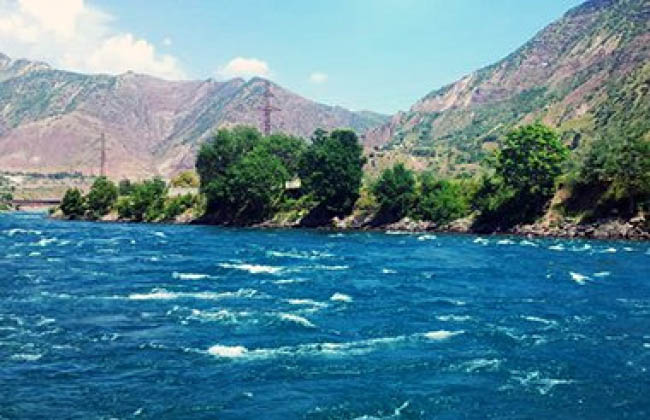From 1960s, struggles were made for utilizing water which were hampered by war. Within the last decade and half, Afghan state and nation have resumed the plan to manage this unique asset, by the world’s technical and scientific cooperation, with the aim of reaching sustainable progress and development. Managing water, mainly flowing water, will minimize poverty, provide security, fortify citizens’ health, increase welfare in the region and develop trade and agriculture in the country.
To gain sustainable development and manage water, struggles have been started to some extent and a comprehensive strategy is adopted. The promising outcomes in recent years are beyond doubt such as the inauguration of Kajaki Dam. Moreover, the trip of Afghanistan’s President to Australia, Indonesia, and Singapore for gaining the technical and professional cooperation in managing water will bear a tangible result.
Studies show that more than 45 percent of Earth’s landmass and 60 percent of the total fresh water of the planet is covered by 276 international common river basin which is shared among 148 countries. Furthermore, the life of about 40 percent of the world’s population is dependent on these international rivers and common water resources. Lack of water resources, industrialization of societies, increase in consumption per capita and the challenge of climate change have multiplied the competition for exploiting these common resources.
Studies further show that in 21st century, the world’s security depends on their water strategy. For instance, the population growth, climate change, and water pollution make the world adopt effective, comprehensive and futuristic policy regarding their water resources.
It is easily noticeable that from the last decade of the 20th century onward, international organizations, multi-national companies, NGOs, and national and international institutions have focused their attention on water resources and managing water – this struggle is on rise.
Water Resources in Afghanistan
Afghanistan’s significant rivers originate from melting snow and natural blocks of ice of central and north-eastern mountains of the country. The flow of water is intensified by rain inside the country. These rivers flow out of border and into neighboring countries after passing long routes in the country. To categorize the countries on the basis of water resources, Afghanistan has somehow appropriate position and it is not among the countries suffering from lack of water resources. The amount of Afghanistan’s flowing water is estimated 75 billion cubic meters annually – 57 billion cubic meters is formed by surface water and 18 billion cubic meters is formed by underground water.
The assessments of Ministry of Energy and Water show that only 30 per cent of country’s water is used for internal objectives. Afghanistan’s flowing water originates mainly from five following river zones:
1- Amo river zone, in north-eastern Afghanistan.
2- Northern river zone, in north.
3- Marghab-Heriroad river zone, in west.
4- Helmand river zone, in south and south-west.
5- Kabul river zone, in east.
Water’s political-security role in international relations
Effective control and water management are a top priority of Afghan government. Therefore, 32 dams are under study, design and operation in the country for achieving the desired result.
The significance of country’s water management
Preferring national interests, considering international principles and respecting the neighboring countries’ rights to water, Afghan government is determined to control and utilize the water resources on larger scale. In fact, water management will lead to sustainable progress and development and the country’s self-sufficiency. Water management will result in betterment in the following cases:
1- Security-economic cooperation with the regions via adopting active water diplomacy.
2- Self-sufficiency in generating energy and electricity and transmitting it to regional countries.
3- Campaigning against poverty and unemployment through developing and fortifying agriculture and livestock.
4- Self-sufficiency and reducing the level of Afghanistan’s dependence on other countries through eliminating poverty, and increasing the country’s outcome with the right management of water resources.
5- Economic boom in the region by effective management and preventing from the waste of water.
6- Protecting and reviving the ecologic environment of the country and the region.
Afghanistan’s activity and agenda
According to officials, the government has adopted comprehensive agenda for water management. Meanwhile, the state, besides capacity building of human resources, works on constructing water dams and redirecting the water route to agricultural lands. In addition, significant plans have been put into practice for controlling and saving up floods, reforming and reconstructing watering system and strengthening the shores. The state has decided to manage water in a way to be able to use the maximum possible measure. Some of the state’s agendas are pointed out shortly below:
1- National agenda for strengthening beaches and controlling floods.
2- National agenda for developing water resources.
3- Agenda for generating energy and electricity.
4- Establishing high council for land and water under the president’s supervision.
5- Completing and utilizing Salma Dam.
6- Completing and utilizing different phases of Kajaki Dam and other dams.
7- Conducting seminars, conferences and technical and professional meetings.
8- Increasing and developing the level of general information.
9- Attracting hundreds of millions of dollars for investment in energy production and water management.
10- Researching, planning and enforcing an agenda for establishing
32 water dams and generating electricity.
11- Assigning several agreements and contracts with internal and external companies for investments.
12 - Finalizing the document of foundation of water diplomacy of Afghanistan.
13- Establishing 50 councils of water utilizers in river zone offices.
14- Planning and endorsing policy and strategy for protecting water constructions.
Home » Opinion » Afghanistan’s Water Management – A Bright Future of Self-Sufficiency
Afghanistan’s Water Management – A Bright Future of Self-Sufficiency
| Zia Danish

